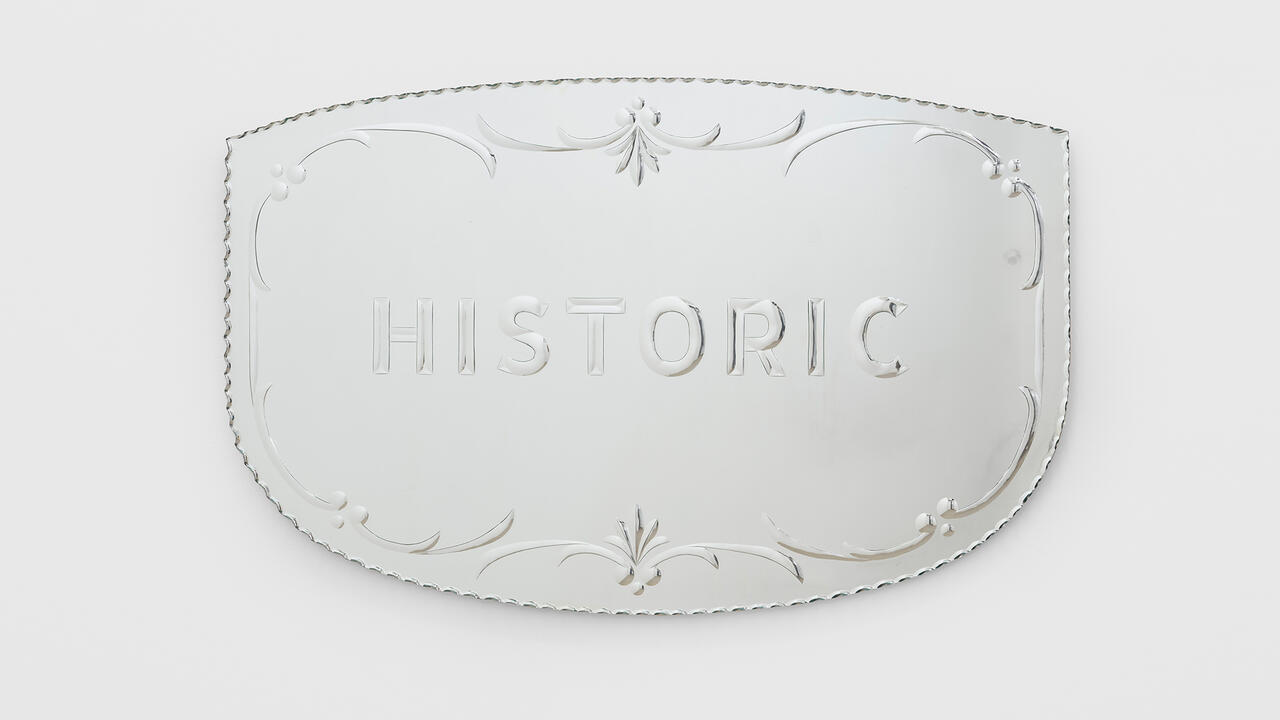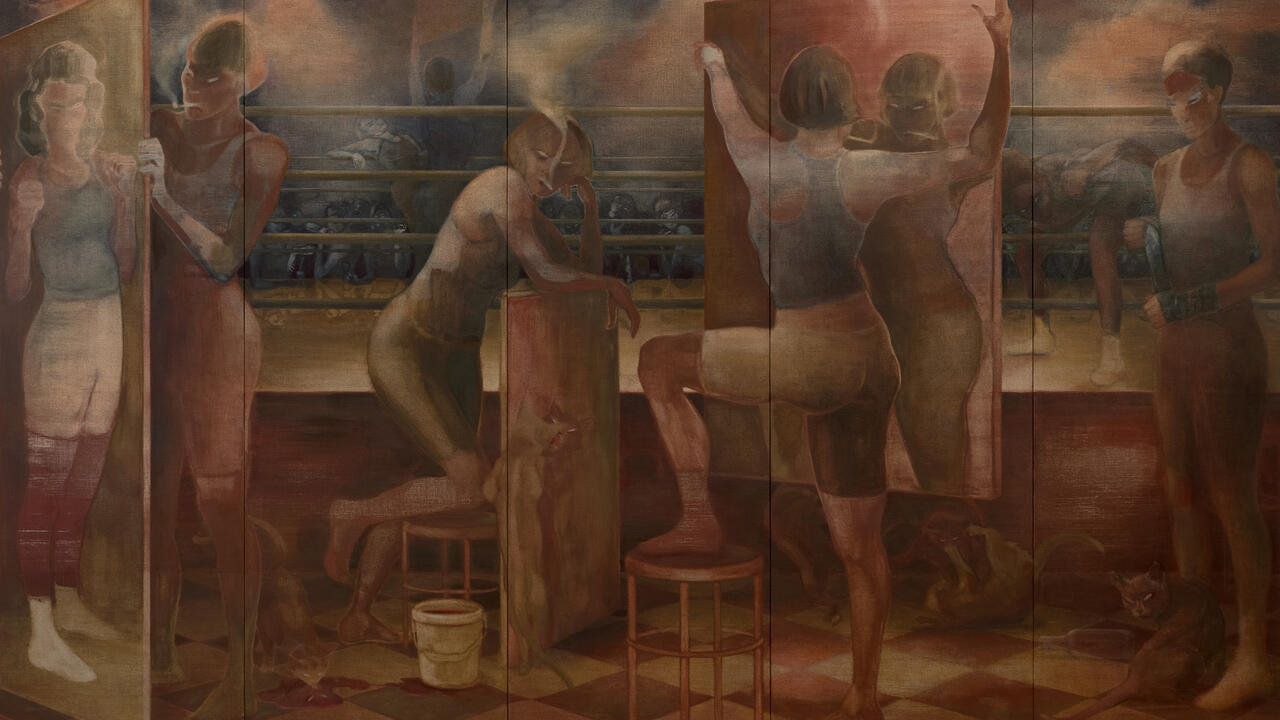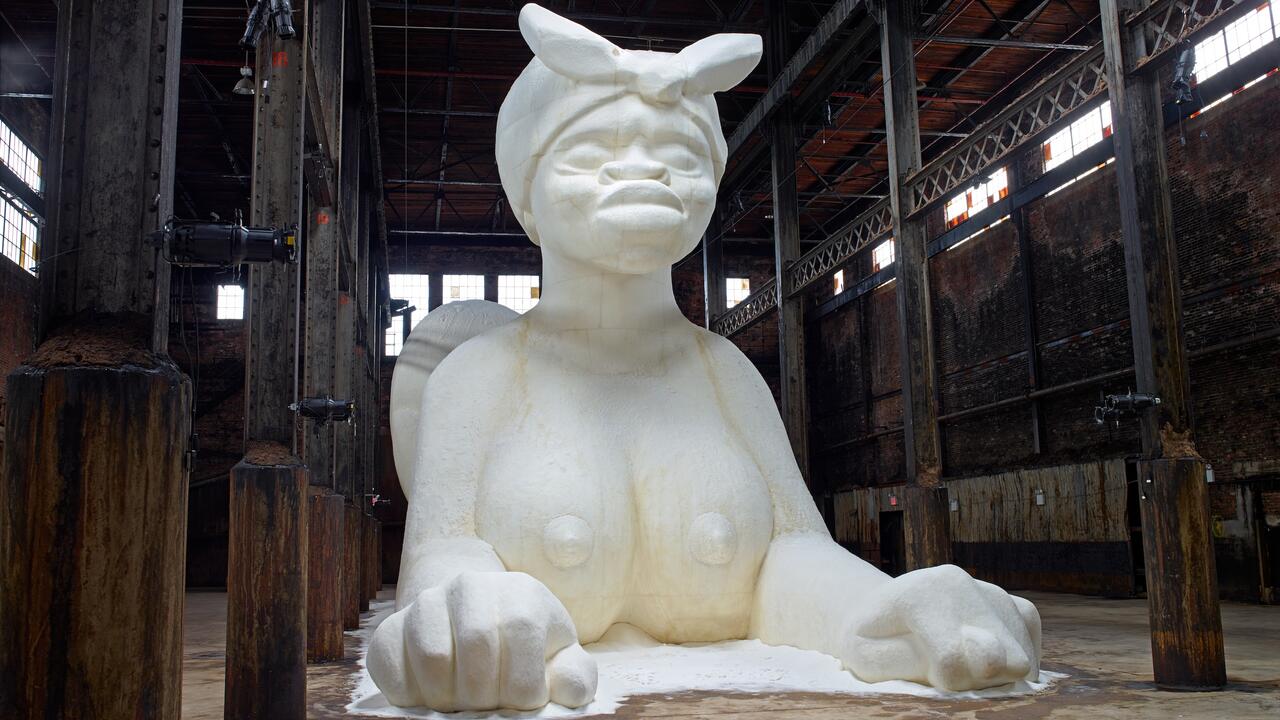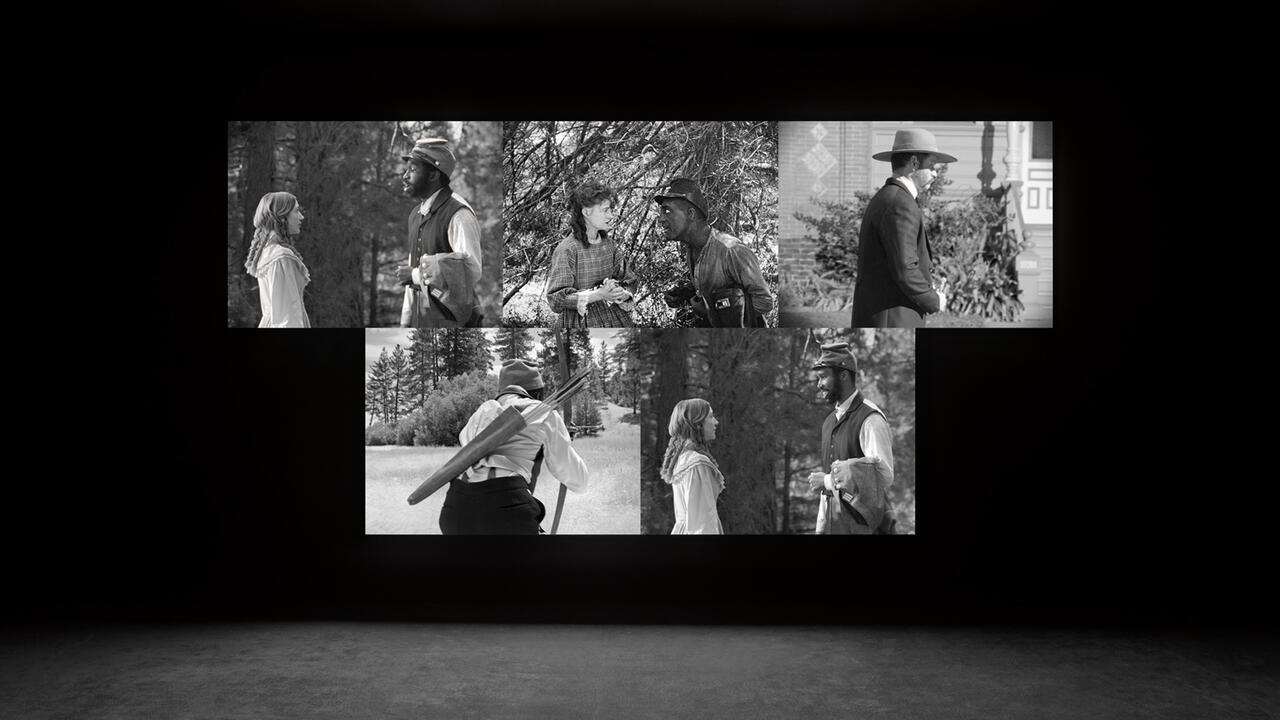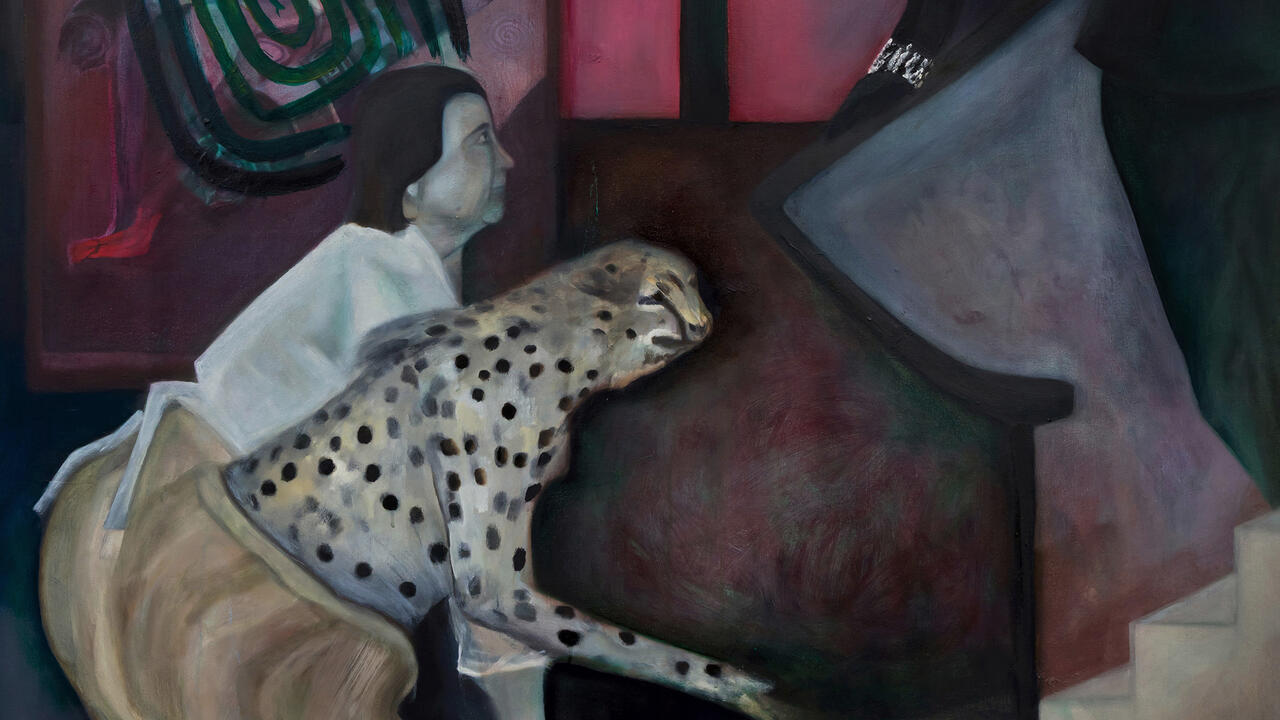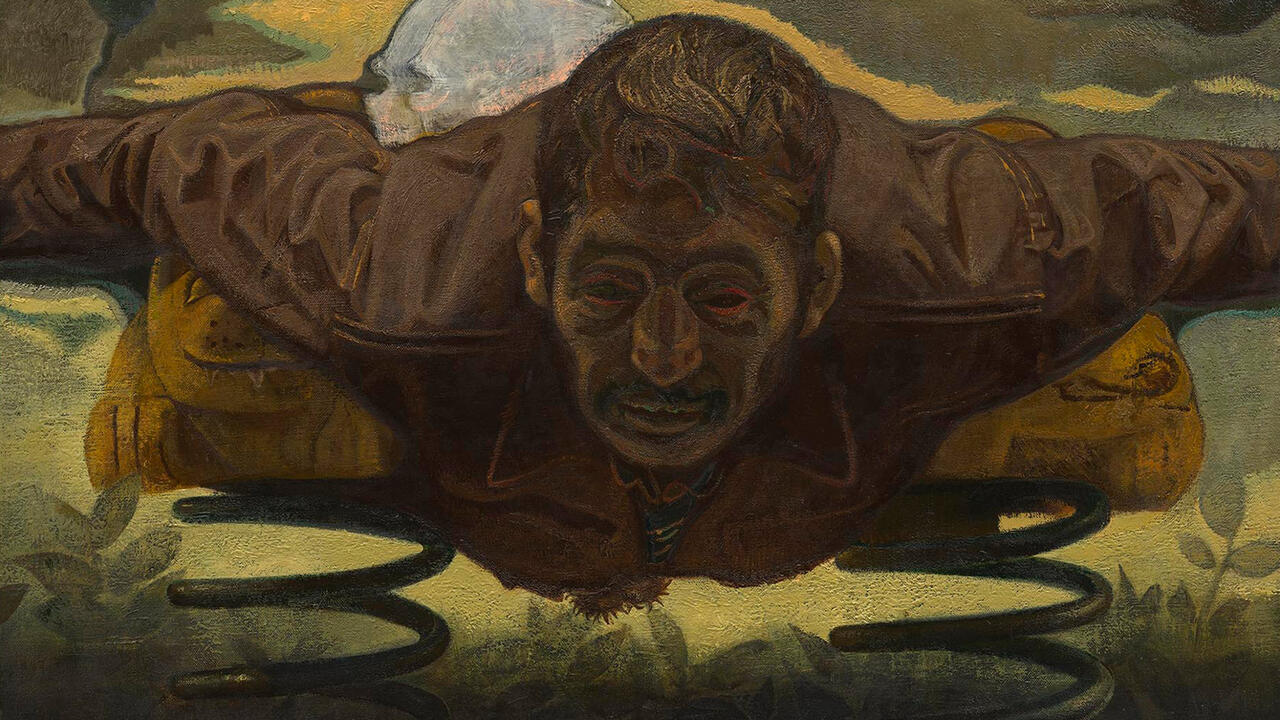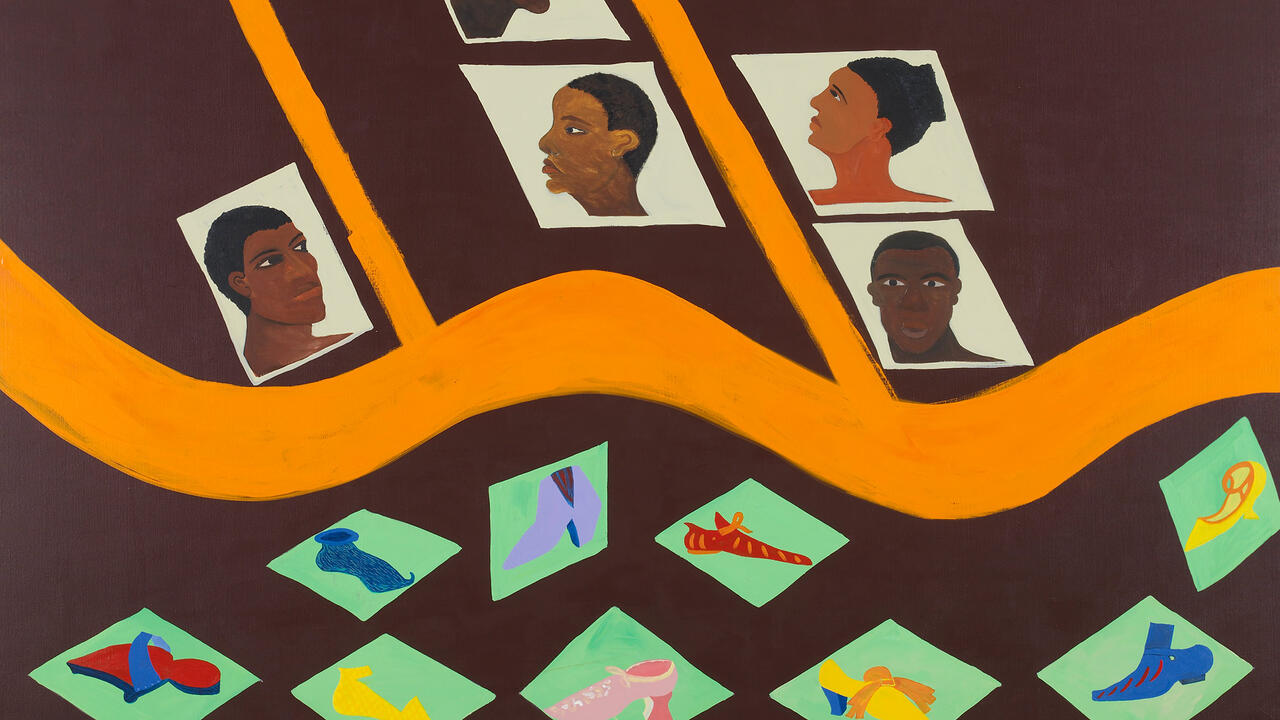Francis Alÿs
Tate Modern, London, UK
Tate Modern, London, UK

The work of Francis Alÿs is routinely described as ‘poetic’. That is, when it is not being described as ‘political’. The artist’s own deadpan statements and aphorisms suggest how complexly the two terms are linked; as Alÿs puts it in the subtitle to The Green Line (2004): ‘Sometimes doing something poetic can become political, and sometimes doing something political can become poetic.’ Tate Modern’s ambitious and varied retrospective – which includes films, videos, paintings, sculptural remnants of Alÿs’ actions as well as sundry preparatory drawings, diagrams and writings – is, among other things, an opportunity to ask what those adjectives mean at a moment when, two decades on from Alÿs’ first major works, the imbrication of aesthetics and politics seems so generalized an artistic and curatorial ambition as to have lost much of its charge. It has become the horizon of cliché behind which we all operate.
One answer to the question regarding ‘poetry’ is risked by Mark Godfrey (who curated the show with Kerryn Greenberg) in his introductory essay for the catalogue: ‘The term “poetic” presumably refers to the absurdity, singularity, muteness and transience of the act, and its openness to interpretation.’ ‘Poetic’ here would signify something akin to its quotidian meaning: a realm possessing its own rigour, for sure, but essentially giving the slip to such tiresome strictures as sense and reference. There’s an element of this in Alÿs, and it’s where much of his humour comes from – a kind of gratuitous refusal of historical gravity that means his art often flirts with whimsy. The Tate Modern show does not shy from this strain in the work; Alÿs’ 2004 video installation The Nightwatch (for which he released a lone fox overnight into The National Gallery in London, and tracked it with the institution’s CCTV cameras) is shown in the museum’s third-floor café, where it baffles and delights, depending on one’s willingness to wait for the creature to flit past on one of 20 monitors.
But the stronger sense of ‘poetic’, also adduced by Godfrey, has surely to do with Alÿs’ singular way with metaphor, the sense that his enigmatic actions, whether modest or extravagant, embody at once affinity and displacement. For a metaphor to convince (or better, dupe) us, it has to be both aloof and proximate: ‘poetry’ depends precisely on our not being able to decide whether the metaphor is naturally apt or clumsily abstract. Hence the special allure of works such as Alÿs’ A Story of Deception (2003–6), from which the exhibition takes its title: shot on a desert highway in Patagonia, the film shows the road as a silvered mirage, endlessly evaporated and renewed as the camera advances. It’s but one of a series of images in Alÿs’ oeuvre to date that seem to symbolize the mobile horizon of modernization, which in Latin America (the Belgian artist has lived in Mexico City since the mid-1980s) has been time and again deferred. This oscillation between optimism and defeat is everywhere in Alÿs’ work, so much so that it appears to over-determine the whole: all these Sisyphean endeavours – the artist pushing a doomed block of ice around his adopted city in Paradox of Praxis I (1997), for example – appear to allegorize historical urgency and collapse too blatantly. Except to say that a certain airy obliquity marks all of the work.
In Rehearsal I (El Ensayo) (1999–2001), the repeated failure of a red Volkswagen Beetle to breast a dusty hill is tied to its comic soundtrack: a brass band that keeps losing its timing and tune. While Alÿs is possibly now best known for projects such as The Green Line that court explicit political significance or those, like the epic dune-shift of When Faith Moves Mountains (2002), that demand numerous collaborators and elaborate resources, the most recent works in this show still evince a modest and wry estrangement. This is the case even when, as in Tornado (2000–10), the artist is at his most heroic, chasing tornadoes and (apparently) fantasizing a pure white calm at the eye of the storm. A recent series of black and white videos on the theme of children’s games condenses such adventures – and condensation is one answer to what we might mean by poetry – to the smallest of repeatable miracles: flat stones skimmed across water. As in Alÿs’ earlier work – fulsomely represented here, and haloed round with texts, diagrams, press cuttings and the mysterious little figures in the painting series ‘Le Temps du sommeil’ (The Time of Sleep, 1996–ongoing) – one has the impression of vastly intricate forces conspiring to enact a shockingly simple ritual.









